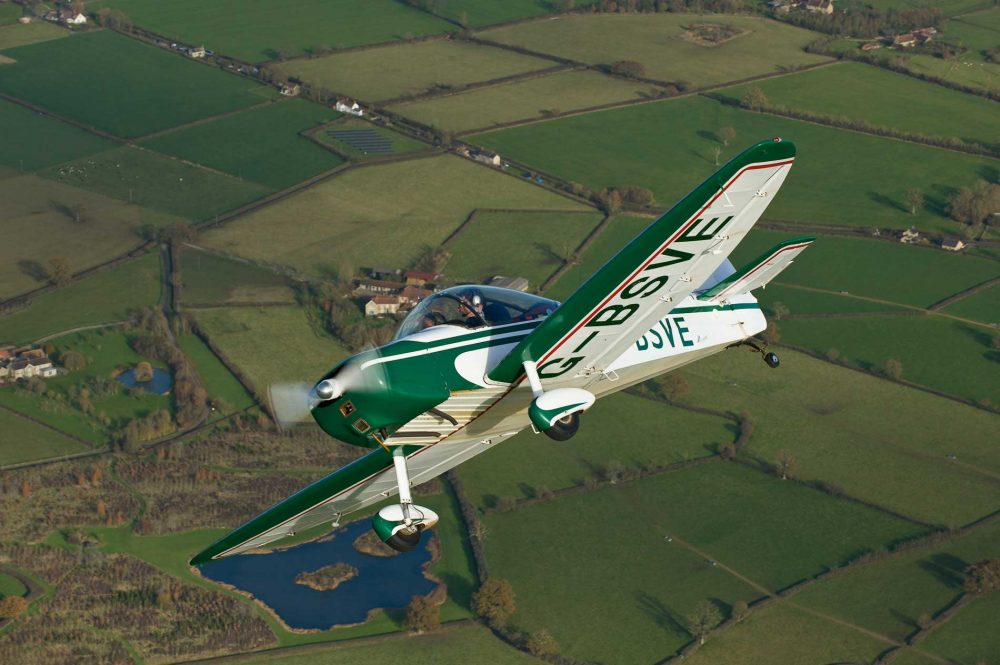Proposed changes to British Civil Airworthiness Requirements affecting Permit aircraft should be shelved, according to a highly critical document issued by the Light Aircraft Association (LAA) today.
The LAA and the British Microlight Aircraft Association (BMAA) manage the airworthiness of Permit aircraft in the UK. The LAA wants the CAA to set up a collaborative working group with the LAA and BMAA to reach a ‘proper consensus’.
“In the past all major changes to regulations have been achieved through a collaborative process that has almost always produced a result that is supported and respected by those who have to implement those regulations,” said the LAA’s Steve Slater.
“The A8-26 approval was created via a working group consisting of the CAA, the LAA and the BMAA involving nearly three years of collaborative effort to achieve the agreed regulation. This time, despite our asking to be involved, there has been no such attempt at collaboration.
“At the end of 2019, we discovered that CAA General Aviation Unit (GAU) had been working on a revision to A8-26, using resources from outside of the GAU (rather than those familiar with LAA and BMAA procedures) to develop changes, and without the usual collaborative working group process.
“It is regretted that the CAA has decided to put these proposed changes out for public consultation without having achieved a consensus, which means that our differences have to be aired in public.
“This can only damage a long-term working relationship which is characterised by partnership and mutual respect.”
The CAA launched a stakeholder consultation on 1 April 2021 on the proposed changes to British Civil Airworthiness Requirements, known as BCAR or CAP 553, and two segments which apply to the LAA and BMAA – Chapter A3-7: Permit to Fly Aircraft – Initial and Continuing Airworthiness and Chapter A8-26: Approval of Organisations Supporting Recreational Aviation.
This is the mechanism by which the CAA delegates the oversight privileges to an approved organisation such as the LAA.
“The LAA has serious reservations about many of the changes proposed, which includes the introduction of large swathes of regulation from the certified world which significantly increase bureaucracy and the cost of providing an airworthiness service with no commensurate improvement in the safety of our activities,” said the LAA document.
“If these changes are passed, the costs of the additional administration and bureaucracy will inevitably have to be passed on through higher fees to LAA members.”
Pilots and other aviation stakeholders have until 27 May 2021 to send comments to the CAA by email to [email protected].
“We would therefore urge you as members and stakeholders, to respond to the public consultation by asking the CAA to withdraw these proposals,” said the LAA. “Please note, it will be your only chance to do so.”
The CAA Consultation is here.
‘Pressing Safety Case’
The LAA says it received its BCAR A8-26 approval in 2016 and has safely and successfully re-validated Permits to Fly more than 13,000 times since that date.
“When the GAU Leadership were challenged on the reasons for embarking on these changes we were advised that ‘there was a pressing safety case’.
“The LAA requested sight of this and on examination, it was found to be based on incomplete MOR data, when Permit aircraft are exempt from the requirement to submit MORs. It was also backed up by a small number of ‘whistle blower’ reports that the LAA fully investigated. We found no evidence of any systemic safety problems.”
The LAA submitted AAIB reported incident data which demonstrated a steady reduction in the rate of incidents over the last 10 years, despite a significant increase in the scale and complexity of LAA activities.
“We do not believe that the CAA has produced a valid safety case to justify their proposed changes.”
LAA













6 comments
For further background, please take a look here:http://www.lightaircraftassociation.co.uk/2021/News/20210517%20CAA%20CONSULTATION%20ON%20DELEGATED%20AIRWORTHINESS%20ORGANISATION%20APPROVALS.pdf
Thanks for raising this – is there any particular format we should use in replying in case the CAA reject any other than a reply format dictated by them
If there is any particular wording we should use or reference please let us know
Hi Chris.
No. They have simply asked that an e-mail is sent to [email protected]. Our comments and further detail can be found on the LAA website and the link above,
Steve
Can you be more specific about the vast swathes of requirements from the certified world?
The irony of this! I’ve been flying my two homebuilt aircraft with LAA oversight, without incident, for the past twenty years and yet a large drone aircraft with CAA oversight was allowed to go out of control and endanger life. More bureaucra(z)y.
Why change , something that is not broken and has proved to work very well.